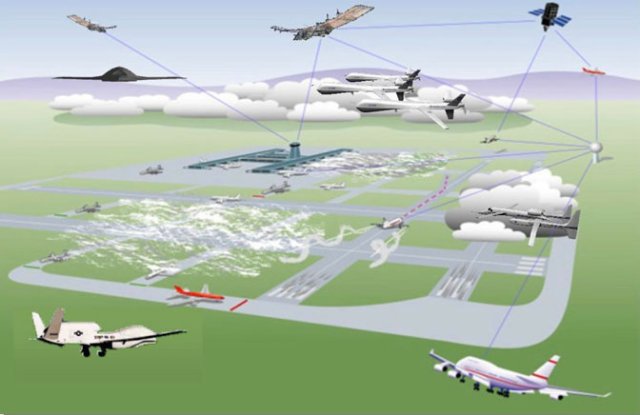NASA’s Dryden Flight Research Center at Edwards Air Force Base, California, is leading a project designed to help integrate unmanned air vehicles into the National Airspace. The Unmanned Aircraft Systems Integration in the National Airspace System project, or UAS in the NAS, will contribute capabilities designed to reduce technical barriers related to safety and operational challenges associated with enabling routine UAS access to the NAS.
The project falls under the Integrated Systems Research Program office managed at NASA Headquarters by the agency’s Aeronautics Research Mission Directorate. NASA’s four aeronautics research centers – Dryden, Ames Research Center, Langley Research Center, and Glenn Research Center – are part of the technology development project.
With the use and diversity of unmanned aircraft growing rapidly, new uses for these vehicles are constantly being considered. Unmanned aircraft promise new ways of increasing efficiency, reducing costs, enhancing safety and saving lives.
The UAS in the NAS project envisions performance-based routine access to all segments of the national airspace for all unmanned aircraft system classes, once all safety-related and technical barriers are overcome.
The project will provide critical data to such key stakeholders and customers as the Federal Aviation Administration and RTCA Special Committee 203 (formerly the Radio Technical Commission for Aeronautics) by conducting integrated, relevant system-level tests to adequately address safety and operational challenges of national airspace access by unmanned aircraft systems, or UAS. In the process, the project will work with other key stakeholders to define necessary deliverables and products to help enable such access.
Within the project, NASA is focusing on five sub-projects. These five focus areas include assurance of safe separation of unmanned aircraft from manned aircraft when flying in the national airspace; safety-critical command and control systems and radio frequencies to enable safe operation of UAS; human factors issues for ground control stations; airworthiness certification standards for UAS avionics and integrated tests and evaluation designed to determine the viability of emerging UAS technology.
Five Focus Areas of the UAS Integration in the NAS Project
Separation Assurance
- Provide an assessment of how planned Next Generation Air Transportation System (NextGen) separation assurance systems, with different functional allocations, perform for UAS in mixed operations with manned aircraft
- Assess the applicability to UAS and the performance of NASA NextGen separation assurance systems in flight tests with realistic latencies and uncertain trajectories
- Assess functional allocations ranging from today’s ground-based, controller-provided aircraft separation to fully autonomous airborne self-separation
Communications
- Develop data and rationale to obtain appropriate frequency spectrum allocations to enable safe and efficient operation of UAS in the NAS
- Develop and validate candidate secure safety-critical command and control system/subsystem test equipment for UAS that complies with UAS international/national frequency regulations, standards and recommended practices and minimum operational and aviation system performance standards for UAS
- Perform analysis to support recommendations for integration of safety-critical command and control systems and air traffic control communications to ensure safe and efficient operation of UAS in the NAS
Human Systems Integration
- Develop a research test bed and database to provide data and proof of concept for GCS – ground control station – operations in the NAS
- Coordinate with standards organizations to develop human-factors guidelines for GCS operation in the NAS
Certification
- Define a UAS classification scheme and approach to determining Federal Aviation Regulation airworthiness requirements applicable to all UAS digital avionics
- Provide hazard and risk-related data to support development of type design criteria and best development practices
Integrated Tests and Evaluation
- Integrate and test mature concepts from technical elements to demonstrate and test viability
- Evaluate the performance of technology development in a relevant environment (full-mission, human-in-the-loop simulations and flight tests)
Source: NASA

